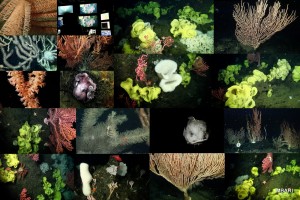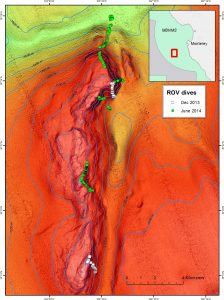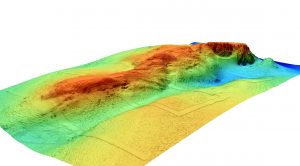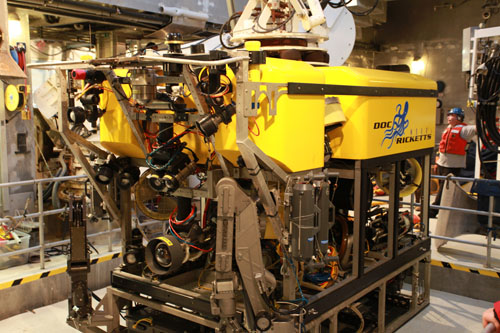You can read the daily cruise logs here
May 29, 2016
Monterey, CA
-

A colorful collage of some of the incredible sights from our 2014 expedition to Sur Ridge, which included more than 10 species of coral, many different sponges, blob sculpins, nudibranchs, brooding octopii, dozens of other cnidarians all on a landscape of ever-changing and diverse habitat.
Deep Sea Corals
During the 2013 expedition, we were the benefactors of fantastic weather, which allowed us to get in an extra day of diving at a place never looked at before: Sur Ridge. This small bump on the seafloor seemed to be potential habitat for deep-sea corals, much like the ones discovered on the Davidson Seamount in 2002. We were not disappointed. On our very first dive, we discovered a plethora of deep sea corals and sponges, clinging firmly to erosion-resistant volcanic rock from the base of the ridge to the top. Corals are suspension feeders; the colony uses its individual polyps to grab particles of food out of the water. Since higher water flow means more food, corals are found on peaks, ridges, and areas of sharp slope change, as water is generally flowing faster up these features, bringing food with it. Sur Ridge represents only the second location within Monterey Bay National Marine Sanctuary that deep-sea corals have been found. We visited this undersea feature again in 2014 and were not disappointed, but we’ve merely begun to understand what forms of life exist on this patch of the sanctuary that is about the size of the island of Manhattan.
ROV Doc Ricketts awaiting deployment (Photo: Chad King/MBNMS/MBARI)


No Sun Needed Here
During the previous two expeditions, we discovered several locations of vescomyid clams. This is a special family of clams that have formed a symbiotic relationship with chemosynthetic bacteria that live inside its gut. It’s a complex chain of events, but essentially, these bacteria convert sulfides into energy for the clam. These sulfides only come from three known sources in the ocean (thus far): cold seeps, hydrothermal vents, and whale falls. Cold seeps area areas where fluid methane escapes through fissures in the rock. Bacteria living within the sediment at cold seeps or colonies that digest whale bones use methane as their energy source to convert sulfates into sulfides, which are then in turn used by the symbiotic bacteria. Symbiotic bacteria near hydrothermal vents, on the other hand, use hydrogen sulfide that is coming directly out of the vent. There are no hydrothermal vents on this part of the coast, and although there are clams on whale falls, they are of a different species.
The goals of this expedition are to further characterize Sur Ridge with more dives than the previous two expeditions combined, including the more gently sloping western side.
The public can follow this exciting expedition with daily cruise logs, as well as the MBNMS Facebook Page and Twitter.
Click the links to read blogs from our 2013 and 2014 expeditions to Sur Ridge (and other targets).
